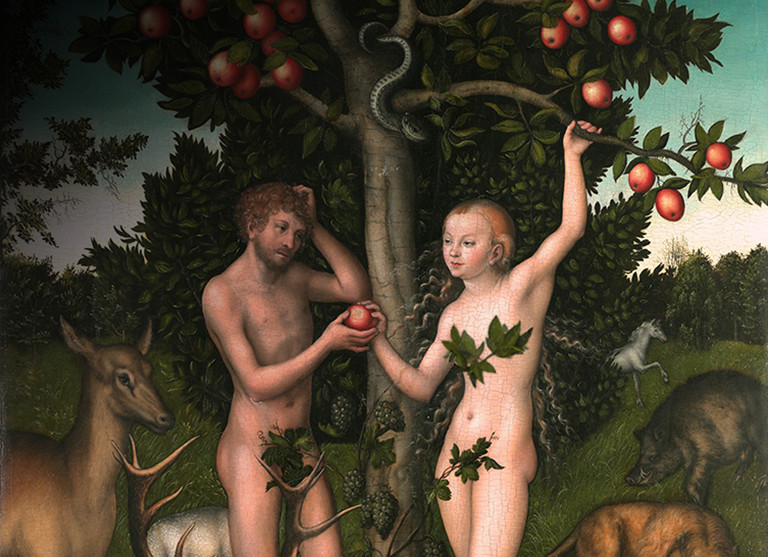
The Forbidden Fruit
Study Biblical Hebrew Online
-

Was it an apple?!
The description of the tree of "the knowledge of good and evil" leaves no trace as to the exact species of the tree. For many years, this fruit was thought to be an apple. In the original Hebrew, however, at no point is the apple (tapuach, תפוח) mentioned. The myth of the apple developed due to a mistake made by St. Jerome when he created the Latin version of the Bible, known as Vulgate in the year 382.
-

The forbidden fruits
So what fruit was it then? Jewish sources offer several answers: nut (אגוז, egoz); citron (etrog, אתרוג); vine (gefen, גפן); wheat (חיטה, chitah); and fig (tenah, תאנה). The two most widespread interpretations are those of the vine and the fig, the prevailing one is of the fig as it is the first tree that appears in Genesis. Moreover, the text recounts that when the first couple realized that they were naked, they sewed a loincloth using a leaf of the fig tree.
-

Learn how to read the Bible
The Hebrew Bible often omits certain details, and it is our job to go and look for the connections. Would you like to learn more about how to decipher biblical stories? Fill in the form and an academic advisor from the Israel Institute of Biblical Studies will contact you. Join our study program of Biblical Hebrew and you will begin to shed light on the most popular myths and translations.
What Our Students Say About Us

Our Academic Partner:
The Hebrew University of Jerusalem
The Israel Institute of Biblical Studies offers certification programs where students can become fully certified experts of biblical languages and studies. Students who take biblical language courses can also get university credits from the Hebrew University of Jerusalem.
The Modern Way to Learn Ancient Secrets
Start your biblical journey with passionate teachers, a supportive community, and a rich variety of educational content that will deepen your knowledge and understanding of the Holy Scriptures.








